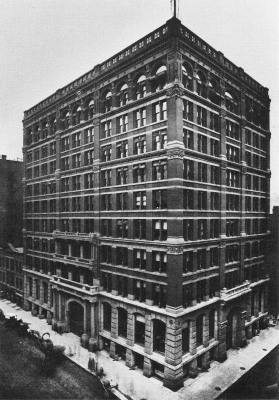
A quintessential part of the modern city, skyscrapers have been around only from late in the 19th Century. Even though there is some debate as to which is the world’s first high-rise building, the Home Insurance Building built by American architect and engineer William Le Baron Jenney is generally acknowledged as the first skyscraper.
Eiffel’s classmate
Born in September 1832 in Massachusetts, U.S., Jenney was a classmate of Gustave Eiffel – the designer of the famous Eiffel Tower in Paris – at the Ecole Centrale Paris. Jenney’s moment of fame came in the 1880s in Chicago.
The Great Chicago Fire of 1871 burnt down a large part of the central city, which was built mainly of wood, to the ground. When the city’s economy was revitalised in the years that followed, the buildings that then came up were made of stone, iron, and steel.
When the New York Home Insurance Company was looking to build a new Chicago headquarters in the downtown area that had been cleared out by the fire, they not only wanted it fireproofed, but also wanted it to be tall enough to accommodate the maximum number of small offices possible above the bank floor. They had an open architecture competition with the winner set to be selected to build their headquarters.
The bird cage story
There’s an urban legend that suggests that Jenney first came up with the idea that an iron skeleton could hold up an. entire building when he noticed his wife place a heavy book on top of a small bird cage, which then easily supported its weight. Jenney’s revolutionary new design that had an inner skeleton of vertical columns and horizontal beams won the contest in 1883.
The new method of construction that Jenny proposed meant that lighter masonry walls could literally be hung from the frame, a little bit like curtains on our walls. This meant that in order to get taller, the Home Insurance Building didn’t have to get thicker, stuffier, heavier, or darker, like most earlier constructions.
While there was a lot of scepticism surrounding Jenney’s design, the construction got under way on May 1,1884. It wasn’t without hurdles, however, as the Home Insurance Company and the City of Chicago halted the project temporarily with safety concerns in order to further investigate the building’s ability to stand on its own.
Taller, but lighter
By the time construction resumed, Jenney had switched from the idea of an iron frame to that of steel, which was a relatively new material. When the building was completed in 1885, it weighed only one third as much in iron and steel as compared to what it would have been, had it been constructed in stone.
The Home Insurance Building stood at 10 storeys and towered 138 feet in the air when it was ready. By 1890, the total height of the building rose to 180 feet as two additional floors were added on top.
Jenney’s success is not only widely regarded as the first skyscraper of the world, but it also marked the beginning of an entire architectural movement that is loosely referred to as the Chicago School. The architects and engineers who were part of this group drove their country forward as they developed the modern skyscraper in the late 19th and early 20th Century.
While Jenney desired to design buildings that would be appreciated by future generations, his masterpiece was demolished in 1931 to make way for another skyscraper. Even though the Home Insurance Building no longer stands in Chicago, there is no doubt that its construction forever changed the way we design and live in modern cities.
Picture Credit : Google




